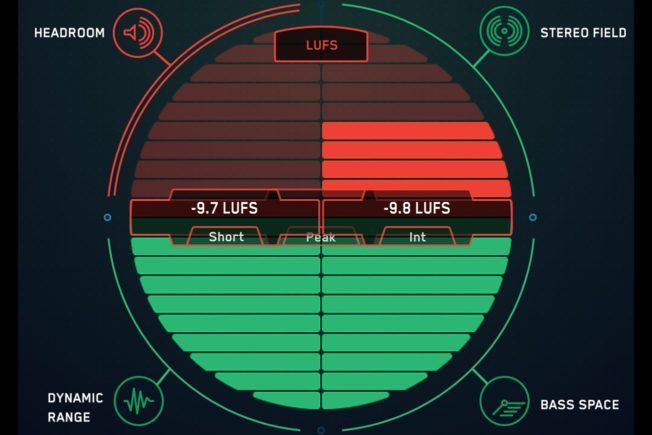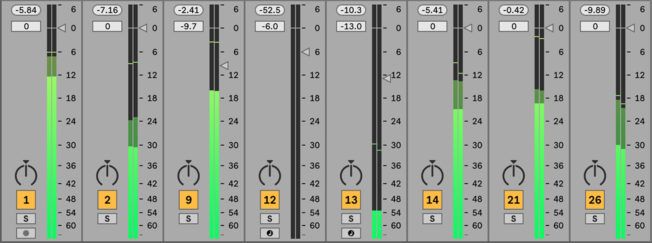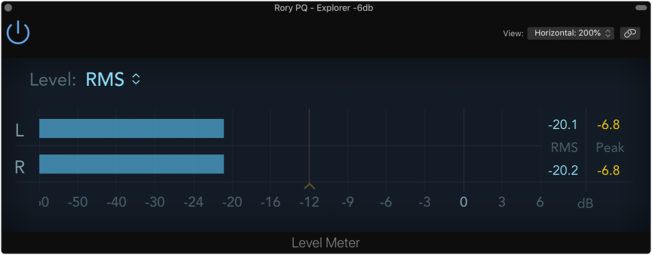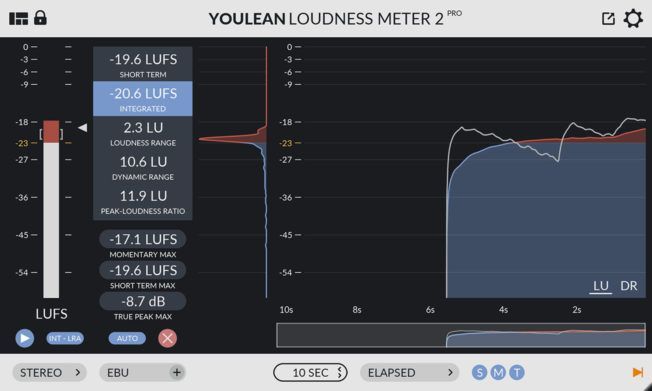What Are Loudness Meters and Why It Matters
What is loudness, and how do you measure loudness? Learn how to use different loudness meters to optimize your music for current loudness standards.

What Is Loudness Metering?
Loudness meters are essential tools used in music production, mixing, and mastering. A loudness meter can analyze, measure, and monitor audio levels in real-time for various purposes. For example, loudness meters help:
- Measure the loudness of studio monitors to help find the optimal listening position.
- Maintain reasonable headroom and ensure input signals are not clipping.
- Visualize levels when gain staging multiple tracks and effects chains.
- Set optimum levels much quicker and easier when recording, editing, and, mixing.
- Measure the loudness of each track or an entire mix when mixing or mastering.
- Achieve consistent levels across all the songs in an EP or album during the mastering stage.
- Meet loudness normalization standards for streaming platforms during the mastering stage.
However, not all loudness meters work the same. The various metering types will give you different information about your levels. It’s important to know the differences between them. This guide looks at three ways to measure loudness in music production, mixing, and mastering.
What is Loudness?
Loudness is a way to measure audio levels based on the way humans perceive sound. Different factors influence the way we perceive loudness such as frequency, timbre, the listening environment, ear sensitivity, and more.
In the television, film, and music industries, loudness measurement has become a standard. This crucial process ensures audio levels remain consistent between loud and quiet songs. It also creates a better listening experience. Music fans can enjoy better quality music without having to adjust their volume controls between varying loudness levels of different songs.
How to Measure Loudness?
Below are the three main ways to measure audio levels in music production, mixing, and mastering:
Peak Level

Peak meters measure the maximum peak levels at a given time. They react quickly to transients and show instantaneous changes in level. These meters are common in DAWs, plugins, mixers, and audio interfaces.
Peak meters can help you monitor a signals dynamic range and available headroom. They are also useful for identifying digital clipping caused when the signal exceeds 0 dBFS. However, peak metering is not an accurate measurement of loudness. Averaging levels is a better measurement of loudness than monitoring instantaneous peak levels.
RMS (Root Mean Square)

RMS meters give a better impression of perceived loudness then peak meters. They measure the dynamic range in a waveform and then display average dB levels calculated over a short period. This method is a more accurate way to determine loudness because it resembles the way a human ear perceives sound levels. Humans perceive loudness from average levels rather than momentary peaks in a sound.
For example, a snare drum hit has a higher peak level than a sustained chord. However, the chord may sound subjectively louder if it has a higher average peak level. But, if both sounds have the same RMS level, they may be perceived as having similar loudness.
RMS metering is commonly used during the mixing and mastering stages to match loudness levels with reference tracks. RMS meters are also used to measure the loudness of studio monitors. However, this method of measuring perceived loudness is not as accurate as LUFS metering.
LUFS (Loudness Units Full Scale)

LUFS metering is the most accurate way of measuring loudness. It’s also the new standard for normalizing audio levels on music platforms such as Spotify, Apple Music, and YouTube. Moreover, this loudness measuring system has helped combat the loudness wars.
LUFS metering is the most accurate way of measuring perceived loudness because it resembles human hearing more closely than other meters. For example, the human ear has different sensitivities to sound at varying frequencies. We perceive volume changes in mid frequencies more acutely than low and high frequency ranges.
LUFS meters employ an algorithm that uses a filter to replicate these subjective loudness sensitivities between frequency ranges. Also, LUFS meters analyze the average perceived loudness over an extended period instead of averaging peak levels like RMS meters. Therefore, a song with loud, momentary peaks will not affect the averages.
In addition, LUFS metering is the current music industry standard for measuring loudness consistency between songs on albums and songs on music streaming platforms. The LUFS standard of normalizing audio also provides a better listening experience. With consistent volume levels, listeners don’t have to keep adjusting the volume between songs. For example, a chill reggae song will have the same perceived loudness as a hard-hitting dubstep track.
How LUFS Is Changing the Loudness Wars
The LUFS standard has also helped combat the loudness wars. Many leading streaming platforms such as Spotify, YouTube, Apple Music, and others apply loudness normalization to create balanced volume levels.
Before streaming platforms normalized levels, people were attempting to increase the loudness of songs as much as possible. The idea pushing this trend is the perception that louder sounds better. As a result, many were sacrificing audio quality for loudness. This flawed concept created an unpleasant listening experience for music consumers who had to continually adjust the volume between quiet and loud songs across the various music platforms.

To help combat these varying levels and degradation of audio quality, streaming services adopted a standard of normalizing audio levels. Many streaming services will now turn down songs with excessive limiting that exceeds their LUFS standard. They will also turn up songs to meet their LUFS target.
Each streaming service has different loudness standards and algorithms to measure and apply normalization. For example, the current Spotify target loudness level is -14 LUFS. Spotify’s normalization process will lower the gain of any track louder than -14 LUFS.
With the rising popularity of streaming services, there’s hope in the music industry that normalization standards will end the loudness wars. The goal is to encourage mixing/mastering engineers to create more dynamic masters. Especially now that streaming services are decreasing the volume of heavily limited songs that exceed their LUFS target. The loudness normalization efforts also remove any unfair advantage between soft and loud masters. However, there’s still an ongoing debate about this topic.
Conclusion
Loudness metering is a critical practice. Loudness meters are useful when trying to identify mix issues and achieve certain target levels. Moreover, you can learn a lot from analyzing other songs with loudness meters. You can gain insight into how different artists are mixing and mastering their music.
Also, if you are optimizing your music for streaming platforms, check their loudness standard. However, the various platforms have different loudness targets. You may have to compromise on a loudness level that sounds best across different platforms. Many consider -16 LUFS a loudness level that offers the best listening experience. Good luck!



